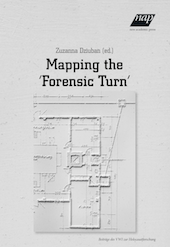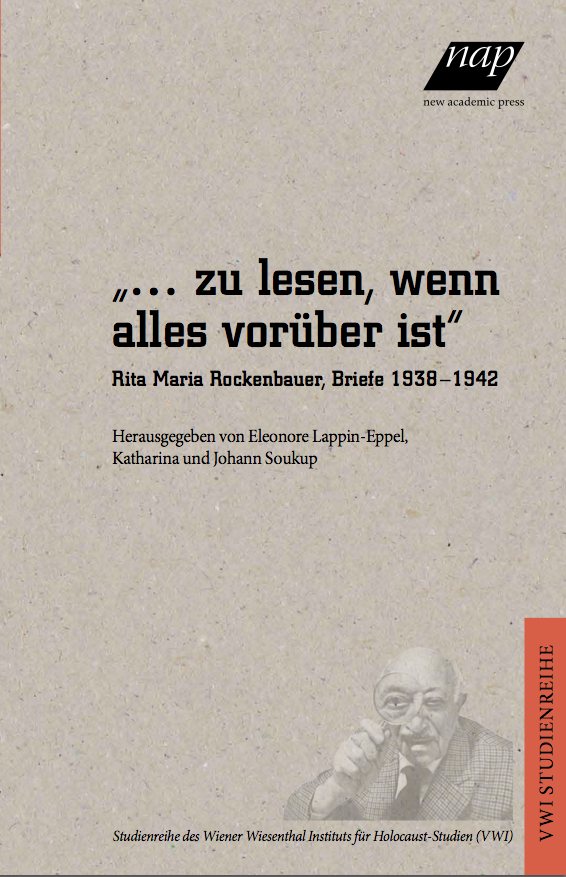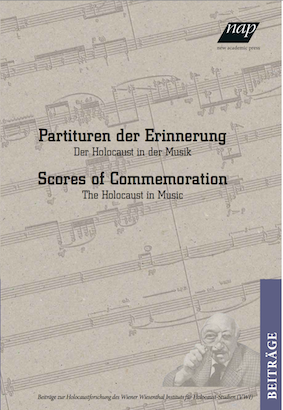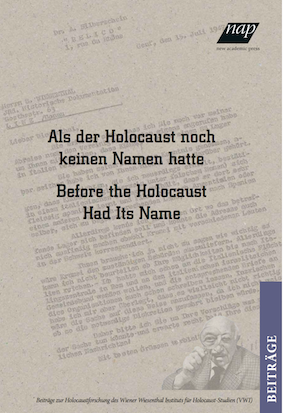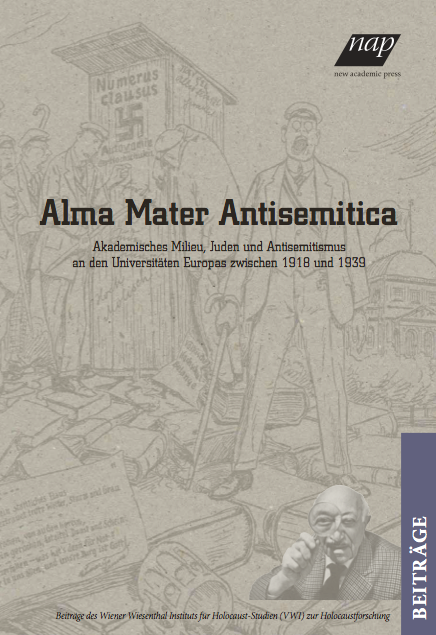 The Slovak National Uprising in 1944 was an important act of military resistance against the collaboration of the Tiso regime with Nazi Germany. It was initiated by members of the Civic movement and to a lesser extent by the Communists, and was eventually brutally crushed by the SS, the Wehrmacht, and pro-Nazi Slovak forces. The insurrection is hardly remembered outside of Slovakia although it became an important lieu de mémoire for Slovak nation-building. Nevertheless, academic studies as well as public history and remembrance of the event was and still is highly controversial. The reason for these disputes are manifold. They are rooted on the one hand in the entrenched hegemonic Communist reading, which created a partisan myth around the uprising while minimising the role of the Civic resistance, and on the other hand in the different representations and interpretations in Czech, Czechoslovak, and Slovak historiographies, which in their respective orientations and ideologies attribute different functions to the uprising. Slovak ultra-nationalist narratives also play their role, seeing the revolt as an international conspiracy against independent Slovakia to re-establish a centralist Czechoslovak Republic. In different periods and power constellations – 1945, 1945–1948, 1948–1968, 1968/1969, after 1969 and 1989 – these various interpretations prevailed or stood at stake, and the fighters of the uprising were either “celebrated” or “cursed”.
The Slovak National Uprising in 1944 was an important act of military resistance against the collaboration of the Tiso regime with Nazi Germany. It was initiated by members of the Civic movement and to a lesser extent by the Communists, and was eventually brutally crushed by the SS, the Wehrmacht, and pro-Nazi Slovak forces. The insurrection is hardly remembered outside of Slovakia although it became an important lieu de mémoire for Slovak nation-building. Nevertheless, academic studies as well as public history and remembrance of the event was and still is highly controversial. The reason for these disputes are manifold. They are rooted on the one hand in the entrenched hegemonic Communist reading, which created a partisan myth around the uprising while minimising the role of the Civic resistance, and on the other hand in the different representations and interpretations in Czech, Czechoslovak, and Slovak historiographies, which in their respective orientations and ideologies attribute different functions to the uprising. Slovak ultra-nationalist narratives also play their role, seeing the revolt as an international conspiracy against independent Slovakia to re-establish a centralist Czechoslovak Republic. In different periods and power constellations – 1945, 1945–1948, 1948–1968, 1968/1969, after 1969 and 1989 – these various interpretations prevailed or stood at stake, and the fighters of the uprising were either “celebrated” or “cursed”.
Editorial
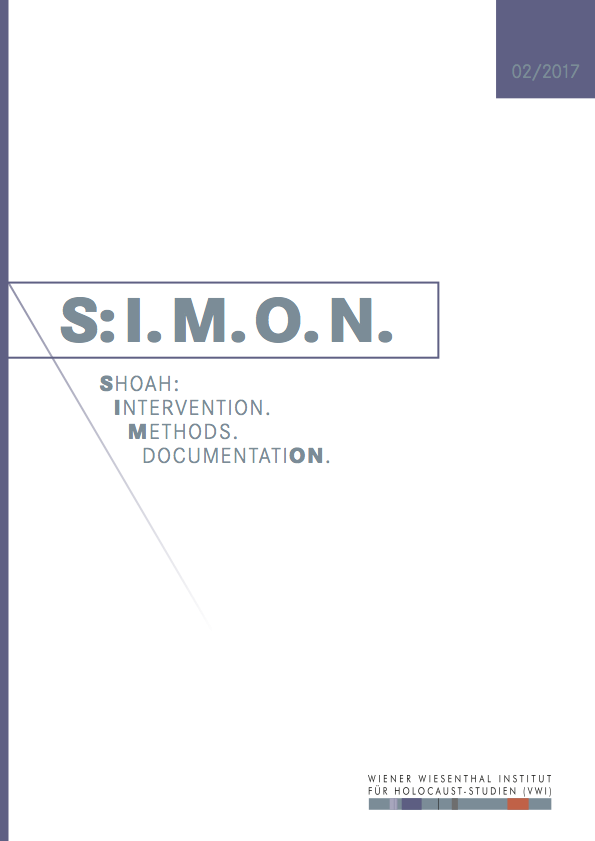 S:I.M.O.N. is an e-journal of the Vienna Wiesenthal Institute for Holocaust Studies (VWI). It appears twice a year in English and German language. S:I.M.O.N. aims at both a transnational and comparative history of the Holocaust and Jewish Studies in Central and Eastern Europe within the broader contexts of the European history of the 20th and 21st century, including its prehistory, consequences and legacies as well as the history of memory.
S:I.M.O.N. is an e-journal of the Vienna Wiesenthal Institute for Holocaust Studies (VWI). It appears twice a year in English and German language. S:I.M.O.N. aims at both a transnational and comparative history of the Holocaust and Jewish Studies in Central and Eastern Europe within the broader contexts of the European history of the 20th and 21st century, including its prehistory, consequences and legacies as well as the history of memory.
S:I.M.O.N. serves as a forum for discussion of various methodological approaches. The journal especially wishes to strengthen the exchange between researchers from different scientific communities and to integrate both the Jewish history and the history of the Holocaust into the different “national” narratives. It also lays a special emphasis on memory studies and the analysis of politics of memory. S:I.M.O.N. uses a double-blind review system, which means that both the reviewer’s and the author’s identities are concealed from each other hroughout the review process.
Shoah: The journal deals with the history of the Shoah from multidisciplinary, transnational and comparative perspectives. It seeks to integrate studies on Jews as well as on other groups of victims of the Holocaust, especially on Roma, and of so far less researched regions of (East) Central and (South) Eastern Europe.
Intervention. The journal reports on research projects and their transmission into public events. It also informs about current educational and remembrance programs.
Methods. The journal serves as a forum for the discussion of methodological approaches as, for instance, the everyday history, oral history, gender history, the history of violence, anti-Semitism and racism and the theory of memory and memory politics.
DocumentatiON. The journal contributes to critical approaches on using and interpreting archival materials in the 21st century.
Download the current issue S:I.M.O.N. 2017/2.
Articles
Patrice G. Poutrus
Die antisemitischen Ausschreitungen im Berliner Scheunenviertel 1923. Zur Berichterstattung der Wiener Tagespresse
 This contribution uses a case study in order to establish the fundamental theses for a research project on the mass media representation of migration in Vienna and Berlin during the interwar period. What knowledge about migratory movement and experiences was spread in the public spheres of both metropolises via the daily press? The institutionalised production and distribution of knowledge made the press a decisive contributor to what was socially accepted to express and visible, to the definition of topics and therefore the collective perception of social contrasts: the media did no merely reflect, but also produced social realities. The case study refers to strongly antisemitic excesses in the Scheunenviertel in Berlin, a district that was largely inhabited by migrants, in early November 1923. It investigates the depiction and interpretation of these events in the Viennese press against a two-fold backdrop and context: the Danubian city's role as the destiny of a massive migration movement that had developed since the collapse of the Habsburg empire and partly even before, as well as Vienna's predominant antisemitism.
This contribution uses a case study in order to establish the fundamental theses for a research project on the mass media representation of migration in Vienna and Berlin during the interwar period. What knowledge about migratory movement and experiences was spread in the public spheres of both metropolises via the daily press? The institutionalised production and distribution of knowledge made the press a decisive contributor to what was socially accepted to express and visible, to the definition of topics and therefore the collective perception of social contrasts: the media did no merely reflect, but also produced social realities. The case study refers to strongly antisemitic excesses in the Scheunenviertel in Berlin, a district that was largely inhabited by migrants, in early November 1923. It investigates the depiction and interpretation of these events in the Viennese press against a two-fold backdrop and context: the Danubian city's role as the destiny of a massive migration movement that had developed since the collapse of the Habsburg empire and partly even before, as well as Vienna's predominant antisemitism.
SWL-Reader
Nóra Berend
Jews and the Hungarian State. Integrative and Exclusionary Models from Medieval to Modern Times
 In Hungary, official memory and history discourses often distinguish between ‘Jews’ and ‘Hungarians’, harking back to the Horthy-era concept of the ‘Christian national’ state. This dichotomy clashes with modern ideas of citizenship and acts as a carrier of antisemitism. This lecture analyses the role of political authority in fostering integration or exclusion over a long time span. It begins with the attitudes of those holding political power in the Kingdom of Hungary in the Middle Ages, when the distinction between Jews and Christians was based on religious affiliation. In particular, two processes will be examined: one leading to increased integration, granting protection and rights, and the other promoting segregation, demonisation and hostility. The lecture will then focus on key moments in modern history, exploring the functions of these two contradictory but related processes. It will finally tackle the question of the role of the state in (dis)continuities between medieval exclusion and modern antisemitism.
In Hungary, official memory and history discourses often distinguish between ‘Jews’ and ‘Hungarians’, harking back to the Horthy-era concept of the ‘Christian national’ state. This dichotomy clashes with modern ideas of citizenship and acts as a carrier of antisemitism. This lecture analyses the role of political authority in fostering integration or exclusion over a long time span. It begins with the attitudes of those holding political power in the Kingdom of Hungary in the Middle Ages, when the distinction between Jews and Christians was based on religious affiliation. In particular, two processes will be examined: one leading to increased integration, granting protection and rights, and the other promoting segregation, demonisation and hostility. The lecture will then focus on key moments in modern history, exploring the functions of these two contradictory but related processes. It will finally tackle the question of the role of the state in (dis)continuities between medieval exclusion and modern antisemitism.
Events
Zoltán Halasi
Duschehubka
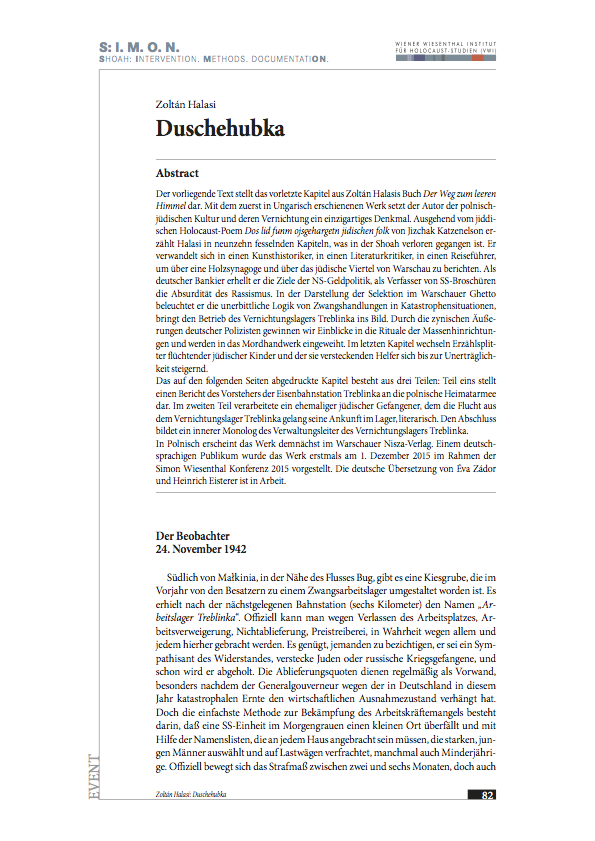 This text is the penultimate chapter of Zoltán Halasi's book Út az üres éghez (Road to an Empty Sky). With this work, which was first published in Hungarian, the author created a singular memorial to Polish-Jewish culture and its destruction. Setting out from the Yiddish Holocaust poem Dos lid funm ojsgehargetn jidischen folk by Itzhak Katzenelson, Halasi records what was lost in the Shoah in the course of nineteen compelling chapters. He takes on the grab of an art historian, a literary critic and a travel guide when he reports about a wooden synagogue and the Jewish quarter in Warsaw. In the role of a German banker, he illuminates the aims of the Nazi monetary policies, as a writer of SS brochures he highlights the absurdity of racism. Depicting a Selektion in the Warsaw ghetto, he shows the grim logic of compulsive acts in catastrophic situations, draws an image of the running of the extermination camp Treblinka. The cynical words of two German policemen provide an insight into the rituals of mass executions and introduce us to the craft of murder. The final chapter is an interplay of slithers of narrative by Jewish children on the run and by those who helped and hid them that borders on the unbearable.
This text is the penultimate chapter of Zoltán Halasi's book Út az üres éghez (Road to an Empty Sky). With this work, which was first published in Hungarian, the author created a singular memorial to Polish-Jewish culture and its destruction. Setting out from the Yiddish Holocaust poem Dos lid funm ojsgehargetn jidischen folk by Itzhak Katzenelson, Halasi records what was lost in the Shoah in the course of nineteen compelling chapters. He takes on the grab of an art historian, a literary critic and a travel guide when he reports about a wooden synagogue and the Jewish quarter in Warsaw. In the role of a German banker, he illuminates the aims of the Nazi monetary policies, as a writer of SS brochures he highlights the absurdity of racism. Depicting a Selektion in the Warsaw ghetto, he shows the grim logic of compulsive acts in catastrophic situations, draws an image of the running of the extermination camp Treblinka. The cynical words of two German policemen provide an insight into the rituals of mass executions and introduce us to the craft of murder. The final chapter is an interplay of slithers of narrative by Jewish children on the run and by those who helped and hid them that borders on the unbearable.
The chapter reproduced on the following pages has three parts: Part one is a Treblinka railway station master's report to the Polish Home Army. In the second part, a former Jewish detainee who managed to escape from the extermination camp Treblinka gives a literary treatment of his arrival at the camp. The final part consists of an inner monologue by the Treblinka extermination camp's director of administration.
The book will shortly be published in Polish at the Nisza publishing company in Warsaw. The German-speaking public was first presented with the work on December 1, 2015 at the Simon Wiesenthal Conference 2015. The German translation by Éva Zádor and Heinrich Eisterer is in progress.
Miroslav Michela: Gefeierte und Verdammte. Der Slowakische Nationalaufstand 1944 als nationaler Erinnerungsort
„... zu lesen, wenn alles vorüber ist“
Rita Maria Rockenbauer, Briefe 1938 –1942
Wien 2014
Partituren der Erinnerung.
Der Holocaust in der Musik
Scores of Commemoration.
The Holocaust in Music
Wien 2015
Before the Holocaust Had Its Name. Early Confrontations of the Nazi Mass Murder of the Jews
Wien 2016
Akademisches Milieu, Juden und Antisemitismus an den Universitäten Europas zwischen 1918 und 1939
Academic Milieu, Jews and Antisemitism at European Universities between 1918 and 1939
Wien 2016


